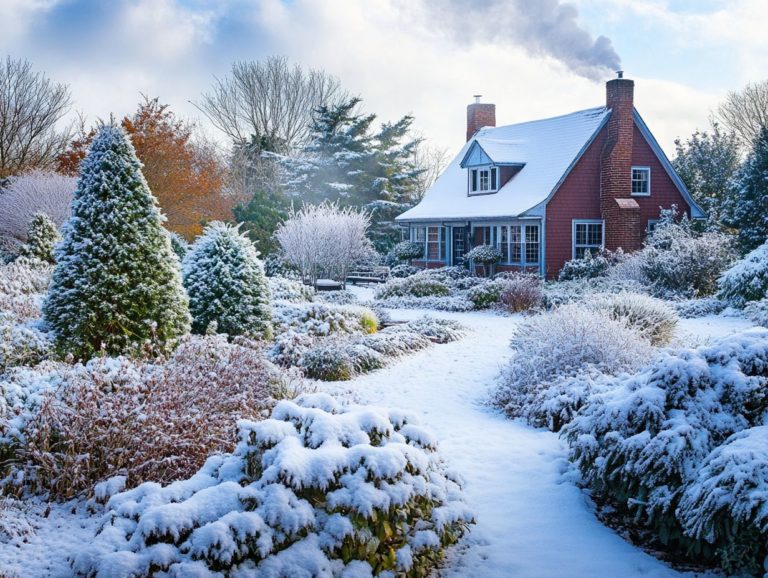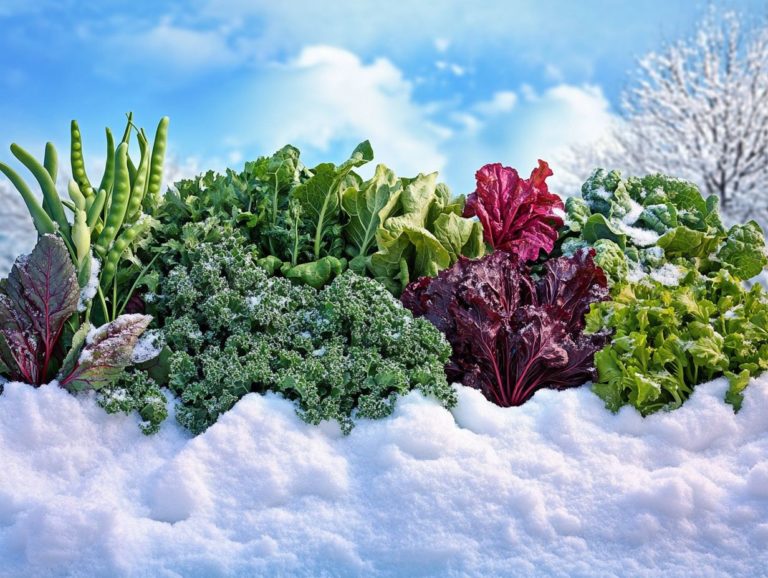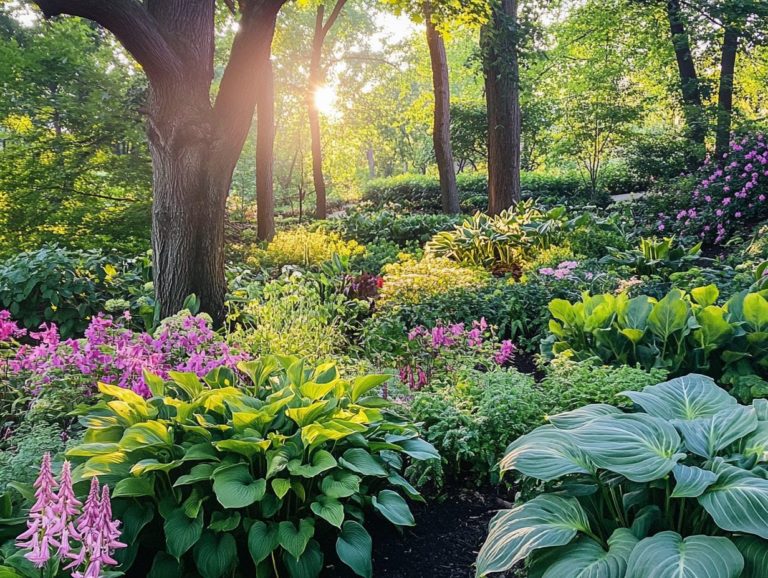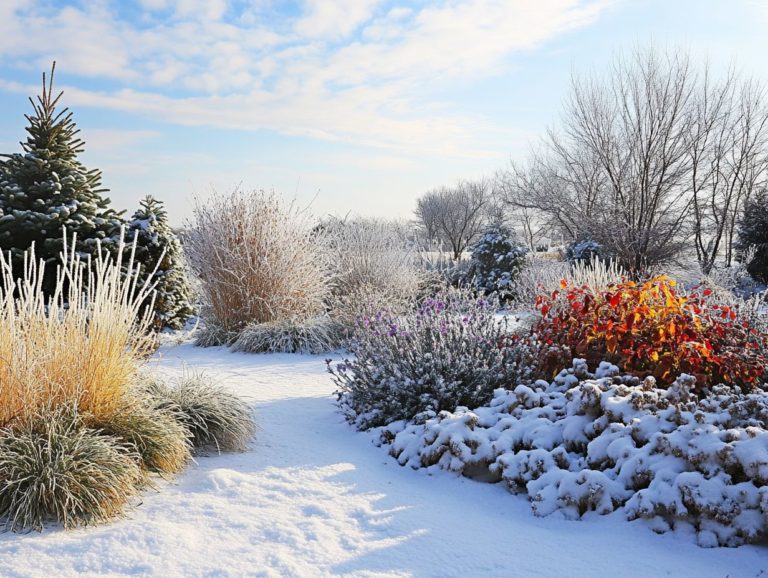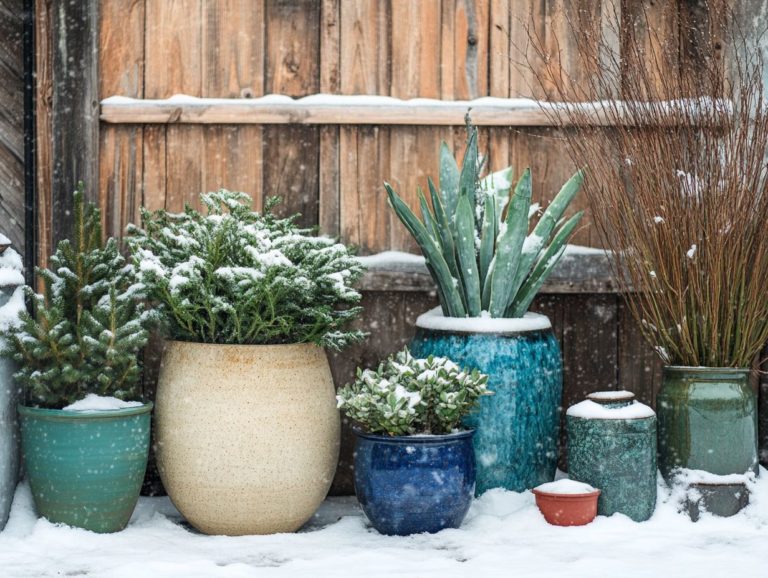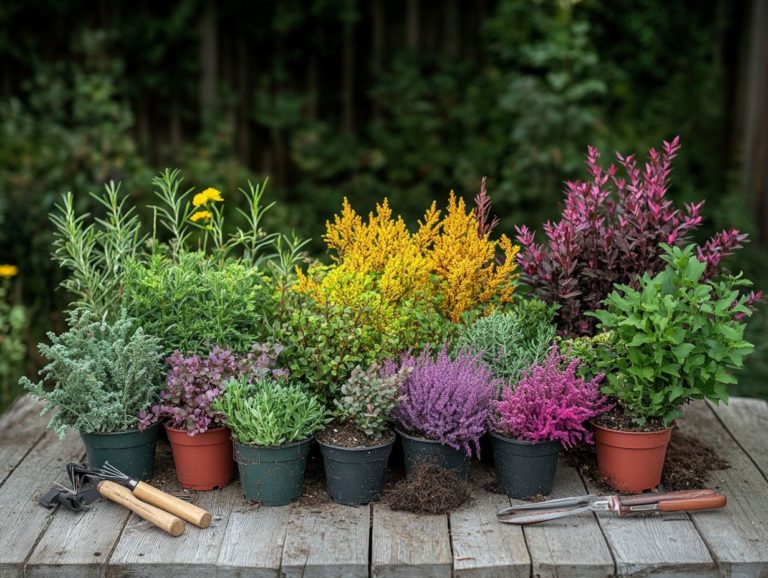Understanding Soil Needs for Cold-Climate Plants
Cold climate gardening brings its own set of unique challenges and rewards, especially regarding soil preparation. The right soil is crucial for the growth and health of plants that thrive in cooler temperatures.
This article delves into the essential role of soil, discusses optimal compositions for various cold-climate species, and offers practical steps for preparing and maintaining your soil. It addresses common soil issues you might encounter and provides effective solutions for tackling them.
Prepare yourself to cultivate a flourishing garden, even in the coldest conditions!
Contents
- Key Takeaways:
- Importance of Soil for Cold-Climate Plants
- Types of Soil for Cold-Climate Plants
- Preparing Soil for Cold-Climate Plants
- Maintaining Soil for Cold-Climate Plants
- Common Soil Issues for Cold-Climate Plants
- Frequently Asked Questions
- What are cold-climate plants?
- What types of soil are best for cold-climate plants?
- Why do cold-climate plants need different soil compared to other plants?
- How can I improve the soil for my cold-climate plants?
- What happens if cold-climate plants are planted in unsuitable soil?
- Can I grow cold-climate plants in containers?
Key Takeaways:
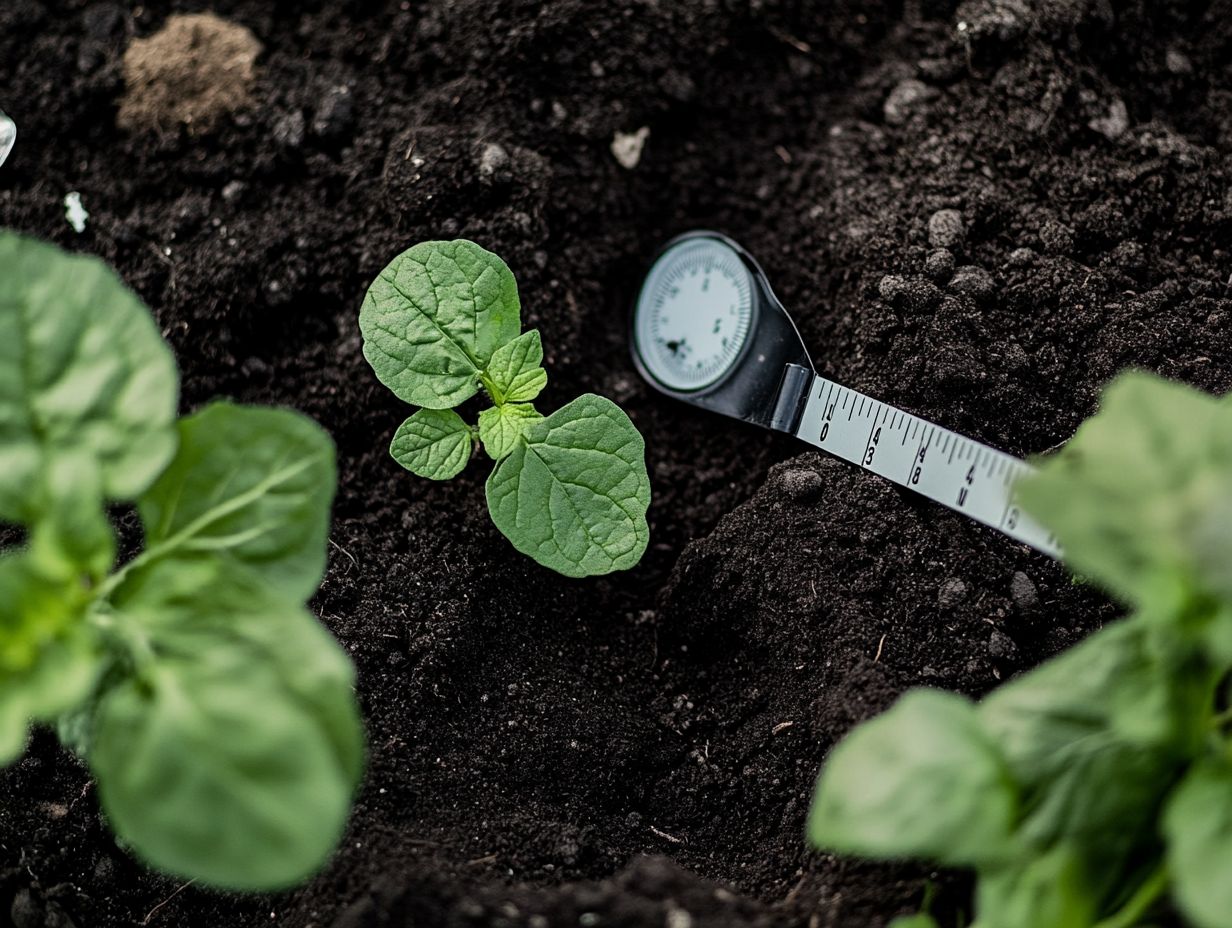
- Understanding the specific soil needs of cold climate plants, including currant bush and daikon, is crucial for their growth and health.
- Different types of soil and their compositions play a significant role in the success of cold-climate plants.
- Proper preparation and maintenance of soil can help prevent common issues and ensure optimal conditions for cold-climate plants to thrive.
Defining Cold-Climate Plants
Cold-climate plants are the resilient champions of gardening, thriving in regions where winters are unforgiving and growing seasons are fleeting. If you garden in places like Wyoming, understanding the traits of these tough species is crucial.
The USDA Plant Hardiness Map and local gardening experts become your best friends, guiding you to determine which plants can brave local weather extremes. By focusing on Heirloom Seeds known for their durability, you can cultivate vibrant landscapes that not only survive but thrive amidst frosts and other chilly challenges.
Think of varieties like kale, a champion that withstands low temperatures while delivering a nutritious bounty, or rhubarb, with its strikingly colorful stalks that are hard to resist. Snow peas and certain Austrian Pines and Ponderosa Pines also flourish in these conditions, provided they have well-drained soil rich in organic matter.
Embracing heirloom seeds not only preserves biodiversity but also introduces unique flavors and growing characteristics that perfectly suit your region. By consulting the USDA Plant Hardiness Map, you can strategically select the right plants for your climate, ensuring your garden flourishes beautifully, even in the coldest months.
Importance of Soil for Cold-Climate Plants
Soil is the heart of your garden! It is vital to the health and productivity of cold-climate plants, offering essential nutrients, moisture retention, and proper drainage. Conducting soil testing to assess nutrient levels helps them flourish.
To master cold-climate gardening, it s important to understand soil composition and enhance soil fertility and moisture retention with organic amendments and green manure like compost. This approach significantly increases your chances of success, ensuring that your plants receive the necessary support during the harsh winter months and thrive brilliantly come Memorial Day.
Role of Soil in Plant Growth and Health
The role of soil in plant growth and health cannot be overstated, especially for cold-climate plants that rely on soil full of nutrients and good structure. Soil fertility directly influences the availability of nutrients needed for robust plant development.
By conducting soil testing before planting, you can tailor your approach to enhance moisture retention and drainage, resulting in healthier plants and a bountiful harvest. Beyond nutrient availability, pH levels play a crucial role in determining which nutrients are accessible to your plants.
For many cold-climate species, a pH range of 6.0 to 7.0 is often ideal, promoting optimal nutrient uptake. Soil structure is equally vital; well-aerated and crumbly soil supports root development and enhances water flow.
By analyzing soil texture and composition, you can strategically amend your soil, ensuring that valuable additions like organic matter or specific fertilizers are used effectively to create the perfect growing environment.
Now that you understand the importance of soil and the specific needs of cold-climate plants, it s time to get started! Share your gardening experiences or ask questions to connect with other gardening enthusiasts!
Types of Soil for Cold-Climate Plants

The type of soil you choose plays a crucial role in the success of cold-climate gardening. Each soil composition presents unique advantages and challenges for your plants.
By understanding how to select and prepare different soil types whether sandy, clay, or loamy you can establish optimal conditions for your cold-climate plants.
Incorporate raised beds for better drainage to enhance drainage and regulate soil temperature. This can significantly boost the performance of your soil in those chillier regions.
Optimal Soil Composition for Different Plants
Optimal soil composition varies for different cold-climate plants, and you need to pay careful attention to the specific needs of each species. This is especially true when growing vegetables and other crops.
A rich blend of organic amendments can significantly enhance soil fertility. This ensures each plant receives the nutrients and support necessary for robust growth. Understanding these differences allows you to tailor your soil preparations to create thriving environments for various cold-hardy vegetables.
Analyze key soil parameters such as pH, nutrients, and drainage capabilities. For instance, root vegetables like carrots and beets flourish in well-draining, loamy soil with a slightly acidic pH. Leafy greens tend to favor a more neutral environment enriched with compost.
Incorporate organic materials like compost, leaf mold, and green manures to improve soil structure and boost the activity of tiny organisms in the soil. By regularly testing and amending your soil with these organic inputs, cultivate a balanced ecosystem that supports healthy growth and resilience against harsh winter conditions.
Preparing Soil for Cold-Climate Plants
You need a thoughtful strategy to prepare soil for cold-climate plants. Begin your process by considering what is the best soil for cold-climate gardens, and start with soil testing to assess nutrient levels and pH balance.
Once you know your soil’s health, act quickly to improve it! Incorporate organic amendments to boost soil fertility. Consider using cover crops like cereal rye and clover as they enhance soil structure and enrich nutrient content.
This comprehensive preparation lays a solid foundation for planting success and encourages vigorous plant development.
Steps for Preparing Soil for Planting
Preparing soil for planting involves several essential steps that significantly enhance soil health and set the stage for a successful growing season, particularly for plants in cold climates.
Start with soil testing to assess existing nutrients and pH. This guides you in making the necessary amendments to boost soil fertility. This crucial process may also involve incorporating organic matter and ensuring proper drainage to establish ideal conditions for your plants’ roots.
In cold climates, where soil tends to be compacted and nutrients may be depleted, each of these steps becomes even more vital. After testing, analyze the results carefully. Determine which organic materials such as compost or well-rotted manure will best enrich your soil.
These amendments nourish the soil and improve its structure, leading to better moisture retention and higher activity of tiny organisms. Ensure proper drainage; consider implementing strategies like raised beds or drainage tiles to prevent waterlogging, which can be detrimental to root health.
By following these essential steps, you can create a robust foundation for your plants, facilitating strong growth even when faced with the challenges of a colder growing season.
Start preparing your soil now to ensure a flourishing garden this winter!
Maintaining Soil for Cold-Climate Plants
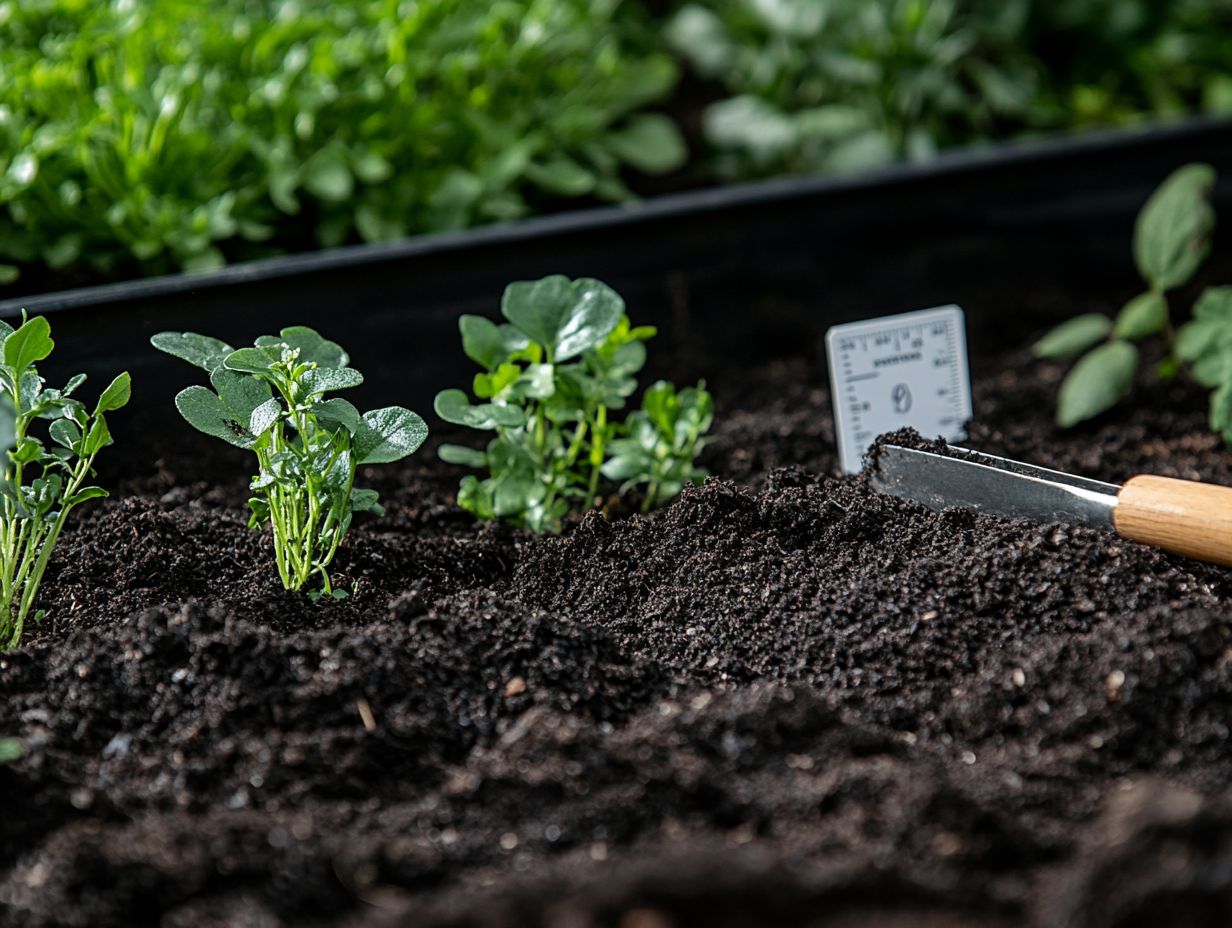
Maintaining soil for cold-climate plants is an ongoing commitment to preserving soil health and fertility throughout the growing season. Effective strategies for soil maintenance involve regularly applying organic amendments to boost soil fertility.
Incorporating cover crops can enhance moisture retention and prevent erosion. These practices create a resilient environment for plant growth, ensuring that your soil remains vibrant and productive, even as temperatures fluctuate and seasons evolve.
Best Practices for Soil Maintenance
When it comes to soil maintenance in cold-climate gardening, a blend of techniques will boost both soil fertility and structure. Regularly applying organic amendments not only elevates your soil s nutrient levels but also promotes better moisture retention, which is crucial during dry spells.
Introducing cover crops can be a game-changer for maintaining soil health, as they help prevent erosion and suppress weeds. This ultimately nurtures a vibrant gardening ecosystem.
You can enhance these practices by incorporating well-decomposed compost or aged manure. These additions enrich your soil with vital nutrients while promoting beneficial microbial activity. Using mulch serves as a protective barrier, helping to retain moisture and regulate soil temperature, thus reducing the impact of harsh cold winds.
Choosing the right cover crops, like clover or rye, not only adds organic matter but also improves soil structure through root development, enhancing aeration and water infiltration. By integrating these actionable strategies, you can cultivate a more resilient garden, even in challenging cold-climate conditions.
Common Soil Issues for Cold-Climate Plants
Cold-climate gardening presents several soil challenges. Issues like poor drainage, nutrient deficiencies, and compacted soil can harm your plants and create complications. By conducting regular soil tests, you can identify these issues early and take steps to rejuvenate your soil’s fertility and structure, ensuring your plants flourish even in colder months.
Identifying and Addressing Soil Problems
Identifying and addressing soil problems is crucial for success in cold-climate gardening, as many issues can significantly hinder plant development and the overall health of your garden.
To understand your soil’s condition, assess it for characteristics like pH, nutrient levels, and texture. Start this process by collecting samples from various spots in your garden to get a comprehensive overview of its health.
Once you have the results from your soil testing, you can pinpoint any deficiencies or imbalances that might be stunting your plant growth. Incorporating solutions such as improving drainage with organic matter or mulch and enhancing soil fertility with well-composted materials or fertilizers tailored for colder climates can help create a thriving ecosystem.
These proactive measures not only tackle existing problems but also foster resilience in your garden, allowing it to flourish beautifully.
Frequently Asked Questions
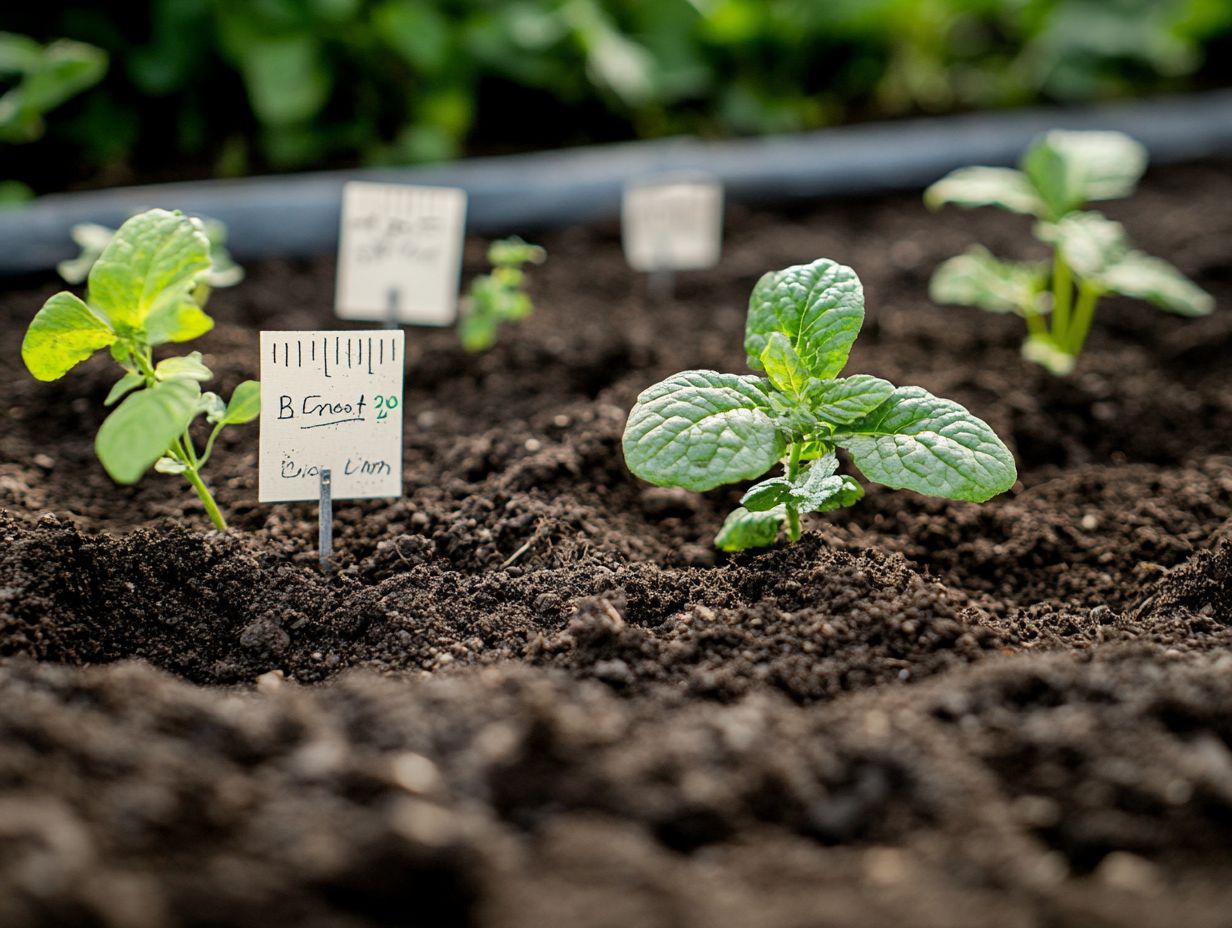
What are cold-climate plants?
Cold-climate plants are species that thrive in colder temperatures and harsher climates. They can withstand freezing temperatures and shorter growing seasons.
What types of soil are best for cold-climate plants?
Cold-climate plants do well in well-drained soils with a high organic matter content. For those interested in optimizing their garden, understanding what fertilizers work best in cold-climate gardens can make a significant difference. Sandy loam and loamy soils are ideal as they provide good drainage and nutrient retention.
Why do cold-climate plants need different soil compared to other plants?
Cold-climate plants have evolved to survive in harsher environments. They have unique nutrient and moisture requirements.
These plants need well-drained soils to prevent root rot. They also require higher organic matter, which acts as insulation during colder months.
How can I improve the soil for my cold-climate plants?
To enhance the soil for cold-climate plants, add organic matter like compost or manure. This boosts nutrient levels and improves drainage, aligning with understanding soil needs for winter vegetables.
You can also use mulching to retain moisture and insulate the soil.
What happens if cold-climate plants are planted in unsuitable soil?
If planted in unsuitable soil, cold-climate plants may struggle to survive. They might not reach their full potential and could become more vulnerable to diseases and pests.
Can I grow cold-climate plants in containers?
Absolutely! You can successfully grow cold-climate plants in containers as long as the soil meets their needs.
Select a well-draining potting mix and provide proper insulation for the container during colder months.

